Enphase IQ 7+ Handleiding
Enphase
Niet gecategoriseerd
IQ 7+
Bekijk gratis de handleiding van Enphase IQ 7+ (5 pagina’s), behorend tot de categorie Niet gecategoriseerd. Deze gids werd als nuttig beoordeeld door 95 mensen en kreeg gemiddeld 4.5 sterren uit 48 reviews. Heb je een vraag over Enphase IQ 7+ of wil je andere gebruikers van dit product iets vragen? Stel een vraag
Pagina 1/5

Q U I C K I N S T A L L G U I D E
Installing Enphase IQ 7, IQ 7+ IQ 7X and Microinverters
To install Enphase IQ Series Microinverters, read and follow all warnings and instructions in this guide and in the Enphase IQ 7 and IQ 7+ Microinverter
Installation and Operation Manual at: . Safety warnings are listed on the back of this guide.enphase.com/support
The Enphase Microinverter models listed in this guide do not require grounding electrode conductors (GEC) or equipment grounding conductors (EGC).
The microinverter has a Class II double-insulated rating, which includes ground fault protection (GFP). To support GFP, use only PV modules equipped
with DC cables labeled or .PV Wire PV Cable
IMPORTANT: Enphase IQ Series Microinverters require the Q Cable and are not compatible with previous Enphase cabling. An Envoy-S is required
to monitor performance of the IQ Microinverters. The Q Accessories work only with Enphase IQ Series Microinverters.
D ) Check that you have these other items:
• An AC junction box.
• Tools: screwdrivers, wire cutter, voltmeter, torque wrench,
sockets, and wrenches for mounting hardware
• Field Wireable Connectors (Q-CONN-R-10M and Q-CONN-R-10F
for single phase Q Cable or Q-CONN-3P-10M and Q-CONN-
3P-10F for multiphase Q Cable): optional male and female
connectors.
E ) Protect your system with lightning and/or surge suppression
devices. It is also important to have insurance that protects
against lightning and electrical surges.
F ) Plan your AC branch circuits to meet the following limits for
maximum number of microinverters per branch when protected
with a 20-amp over-current protection device (OCPD). For
multiphase installations, use a 3-pole 20A OCPD.
Maximum* IQ Micros per AC branch circuit
IQ 7 Micros IQ 7+ Micros IQ 7X Micros
Single-phase 16 13 12
Multiphase 48 39 36
* Limits may vary. Refer to local requirements to dene the
number of microinverters per branch in your area.
G ) Size the AC wire gauge to account for voltage rise. Select the
correct wire size based on the distance from the beginning of the
Enphase Q Cable to the breaker in the load center. Refer to the
Voltage Rise Technical Brief at for more enphase.com/support
information.
Center-feed the branch circuit to minimize voltage Best practice:
rise in a fully-populated branch.
AC connector
Enphase
IQ Series Micro
DC connector
AC junction box/isolator
terminator
Enphase
Q Cable
Tie wraps or
cable clips
Enphase
disconnect
tool
PREPARATION
A ) Download the Enphase Installer Toolkit mobile app and
open it to log in to your Enlighten account. With this app,
you can scan microinverter serial numbers and connect
to the Enphase Envoy-S to track system installation
progress. To download, go to or enphase.com/toolkit
scan the QR code at right.
B ) Refer to the following table and check PV module compatibility at:
enphase.com/en-us/support/module-compatibility.
Model DC connector PV module cell count
IQ7-60-2-INT MC-4 locking type Pair only with 60-cell modules.
IQ7PLUS-72-2-INT MC-4 locking type Pair with 60- or 72-cell modules.
IQ7X-96-2-INT MC-4 locking type Pair only with 96-cell modules.
C ) In addition to the Enphase Microinverters, PV modules and racking,
you will need these :Enphase items
• An Enphase Envoy-S (model ENV-S-WM-230 or ENV-S-WB-230-F/G/I)
communications gateway is required to monitor solar production and
may be required to propagate a grid prole to the microinverters.
NOTE: Depending on your region, IQ Series Microinverters may not
produce until an Envoy-S is installed and congured with the appropri-
ate grid prole. See the Envoy-S Quick Install Guide for details.
• Enphase Q Relay, single phase (Q-RELAY-1P-INT) or Enphase Q Relay,
multiphase (Q-RELAY-3P-INT).
• Tie wraps or cable clips (ET-CLIP-100) - works with both multiphase
and single-phase cable
• Enphase Sealing Caps (Q-SEAL-10): for any unused connectors on
the Enphase Q Cable
• Enphase Terminator (Q-TERM-R-10 for single phase or Q-TERM-
3P-10 for multiphase): one for each AC cable segment end.
• Enphase Disconnect Tool (Q-DISC-10)
• Enphase Q Cable for single-phase or multiphase:
Cable model Connector
spacing*
PV module
orientation
Connectors
per box
Single-phase
Q-25-10-240 1.3m Portrait (all) 240
Q-25-17-240 2.0m 240Landscape (60- and 96-cell)
Q-25-20-200 2.3m Landscape (72-cell) 200
Multiphase
Q-25-10-3P-200 1.3m Portrait (all) 200
Q-25-17-3P-160 2.0m 160Landscape (60- and 96-cell)
Q-25-20-3P-160 2.3m Landscape (72-cell) 160
*Allows for 30 cm of cable slack.

Manage the Cabling
A ) Use cable clips or tie wraps to attach the
cable to the racking. The cable must be
supported at least every 1.8 m.
B ) Dress any excess cabling in loops so
that it does not contact the roof. Do
not form loops smaller than 12 cm in
diameter.
Create an Installation Map
Create a paper installation map to record microinverter serial num-
bers and position in the array.
A ) Peel the removable serial number label from each microinverter
and afx it to the respective location on the paper installation map.
B ) Peel the label from the Envoy-S and afx it to the installation map.
C ) Always keep a copy of the installation map for your records.
6
5
4
Afx serial number labels
Connect the Microinverters
A ) Connect the microinverter. Listen for a click as the connectors
engage.
B ) Cover any unused connectors on the AC cable with Enphase
Sealing Caps. Listen for a click as the sealing caps engage.
To remove a sealing cap or AC connector, you must use an Enphase
disconnect tool.
Cable clip
WARNING: Install sealing caps on all unused AC connectors as
these connectors become live when the system is energized.
Sealing caps are required for protection against moisture ingress.
Mount the Microinverters
A ) If the Enphase DC bulkhead connectors are not already attached to
the microinverters, attach them now. Make sure they are fully seated.
B ) Mount the microinverter bracket side up (as shown) and under the
PV module, away from rain and sun. Allow a minimum of 1.9 cm
between the roof and the microinverter. Also allow 1.3 cm between
the back of the PV module and the top of the microinverter.
C ) Torque the mounting fasteners as follows. Do not over torque.
• 6 mm mounting hardware: 5 N m
• 8 mm mounting hardware: 9 N m
• When using mounting hardware, use the manufacturer’s recom-
mended torque value
3
INSTALLATION
Position the Enphase Q Cable
A ) Plan each cable segment to allow connectors on the Enphase Q Cable
to align with each PV module. Allow extra length for slack, cable turns,
and any obstructions.
B ) Mark the approximate centers of each PV module on the PV racking.
C ) Lay out the cabling along the installed racking for the AC branch circuit.
D ) Cut each segment of cable to meet your planned needs.
1
Position the Junction Box
A ) Verify that AC voltage at the site is within range:
Single-Phase Service Three-Phase Service
L1 to N 207 to 253 VAC L1 to L2 to L3 360 to 440 VAC
L1, L2, L3 to N 207 to 253 VAC
B ) Install a junction box at a suitable location on the racking.
C ) Provide an AC connection from the junction box back to the electricity
network connection using equipment and practices as required by
local jurisdictions.
2
WARNING: When transitioning between rows, secure the cable to
the rail to prevent cable or connector damage. Do not count on the
connector to withstand tension.
DC connector
AC connector
WARNING: Install the microinverter under the PV module to avoid
direct exposure to rain, UV, and other harmful weather events. Do
not mount the microinverter upside down.

Connect the PV Modules
A ) Connect the DC leads of each PV module to the DC input
connectors of the corresponding microinverter.
B ) Check the LED on the connector side of the microinverter.
The LED ashes six times
when DC power is applied.
C) Mount the PV modules
above the microinverters.
DANGER! Electric shock hazard. The DC conductors of
this PV system are ungrounded and may be energized.
Energize the System
A ) Turn ON the AC disconnect or circuit breaker for the branch
circuit.
B ) Turn ON the main utility-grid AC circuit breaker. Your system
will start producing power after a ve-minute wait time.
C ) Check the LED on the connector side of the microinverter:
LED Indicates
Flashing green Normal operation. AC grid function is normal
and there is communication with the Envoy-S.
Flashing orange The AC grid is normal but there is no
communication with the Envoy-S.
Flashing red The AC grid is either not present or not within
specication.
Solid red There is an active “DC Resistance Low, Power
Off” condition. To reset, refer to the Enphase
Envoy-S Installation and Operation Manual at:
http://www.enphase.com/support.
9
10
Status
LED
AC connector
DC connector
Terminate the Unused End of the Q Cable7
WARNING: The terminator can not be re-used. If you
unscrew the nut, you must discard the terminator.
Complete Installation of the Junction Box
A) Connect the Enphase Q Cable into the junction box.
B) Note that the Q Cable uses the following wiring color code:
Single-Phase Three-Phase
Brown – L1
Blue - N
Brown – L1
Black – L2
Grey – L3
Blue - N
NOTE: The Q Cable internally rotates L1, L2, and L3 to provide
balanced 400 VAC (three-phase), thus alternating phases between
microinverters.
NOTE: Minimise the number of unused Q Cable connectors with
three-phase systems. When cable connectors are left unused on
a three-phase system, it creates a phase imbalance on the branch
circuit. If multiple cable connectors are skipped over multiple branch
circuits, the imbalance can multiply.
8ACTIVATE MONITORING AND SELECT
GRID PROFILE
After you have installed the microinverters, follow the proce-
dures in the to activate Enphase Envoy-S Quick Install Guide
system monitoring, set up grid management functions, and
complete the installation.
• Connect the Envoy-S
• Detect devices and select grid prole
• Connect to Enlighten
• Register the system
• Build the virtual array
Single-phase Q Cable : Q-TERM-R-10 Three-phase Q Cable : Q-TERM-3P-10
A ) Remove 13 mm
of the cable sheath
from the conductors.
Use the terminator
body loop
to measure.
A ) Remove
20 mm of the
cable sheath
from the
conductors.
B ) Slide the hex nut
onto the cable. The
grommet inside the
terminator body
must remain in
place.
B ) Slide the hex nut
onto the cable. The
grommet inside the
terminator body
must remain in
place.
C ) Insert the cable into
the terminator body so
that the two wires land
on opposite sides of the
internal separator.
C ) Insert the cable into
the terminator body so
that the four wires land
on separate sides of the
internal separator.
D ) Insert a screwdriver into the slot on
the top of the terminator to hold it in
place. Hold the
terminator body
stationary with the
screwdriver and
turn only the hex
nut to prevent the
conductors from
twisting out of the
separator.
Torque the nut to 7.0 Nm.
D ) Bend the wires down into the
recesses of the terminator body and
trim as needed.
Place the cap over
the terminator
body. Insert a
screwdriver
into the slot on the
terminator cap
to hold it in place.
Rotate the hex nut
with your hand or a wrench until the
latching mechanism meets the base.
Do not over torque.
E ) Attach the terminated cable end
to the PV racking with a cable clip
or tie wrap so that the cable and
terminator do not touch the roof.
E ) Attach the terminated cable end
to the PV racking with a cable clip
or tie wrap so that the cable and
terminator do not touch the roof.
13mm
Internal View
Product specificaties
| Merk: | Enphase |
| Categorie: | Niet gecategoriseerd |
| Model: | IQ 7+ |
Heb je hulp nodig?
Als je hulp nodig hebt met Enphase IQ 7+ stel dan hieronder een vraag en andere gebruikers zullen je antwoorden
Handleiding Niet gecategoriseerd Enphase

9 April 2024

20 Juni 2023
Handleiding Niet gecategoriseerd
- Zoofari
- Selleys
- Selec
- Hudora
- Balance
- Thalheimer
- Lvetek
- Rossum Electro-Music
- Axing
- Delfield
- Imperia
- Chacon
- HK Audio
- JAXY
- Rindor
Nieuwste handleidingen voor Niet gecategoriseerd
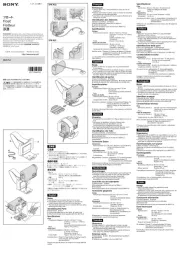
16 September 2025
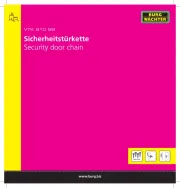
16 September 2025
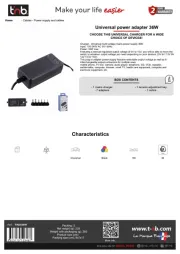
16 September 2025
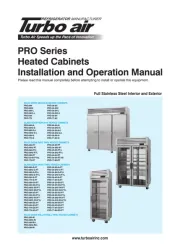
16 September 2025
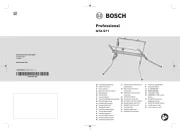
16 September 2025
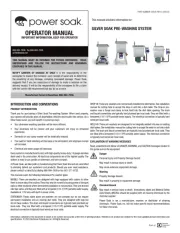
16 September 2025
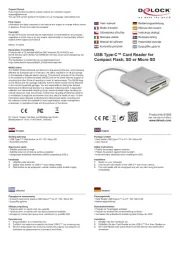
16 September 2025
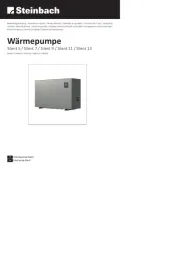
16 September 2025

16 September 2025
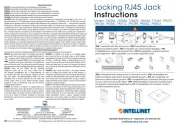
16 September 2025